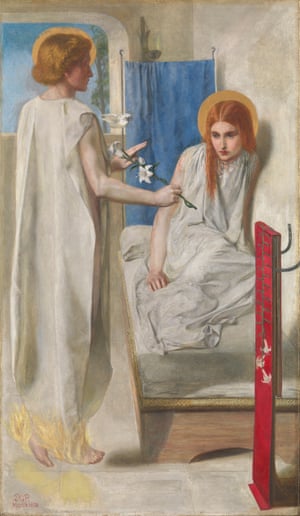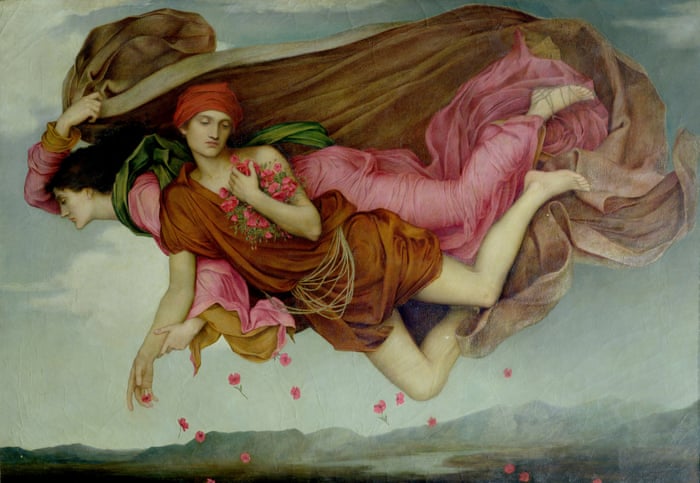
During a recent visit to the National Portrait Gallery in London I saw an exhibition showcasing 12 women who form part of what the organisers of this show call the hidden Pre-Raphaelite Movement. It is curated by Dr Jan Marsh, art historian and writer, who has a particular interest in 19th and early 20th-century painting by women.
The director of the National Gallery, Dr Nicholas Cullinan, writes in the forward to the exhibition catalogue that after two centuries the Pre-Raphaelite movement and its associate members are still popular today. He goes on to say that the gallery has never hosted an exhibition of the work of this group and feels it is time to redress the balance with a particular emphasis on the importance of the women in the group. However, there are a number of paintings by Dante Gabriel Rossetti and Edward Millais, among others, illustrating the importance of the female muse as model and sitter.
In her article in the catalogue, Dr Marsh discusses this Pre-Raphaelite sisterhood and lists the 12 women. The female painters’ work exhibited here is well worth a view. Of Joanna Boyce Wells, who died in childbirth aged only 30, Dante Gabriel Rossetti said: “She is a great artist sacrificed to bringing more kids into the world”. [Marsh Jan Dr. 2018 p.95). Ref catalogue.] Other painters include Maria Spartili Stillman, whose work was admired by Henry James among others. Originally a model, she trained with Ford Madox Brown (a PRB member). Evelyn de Morgan trained at the Slade School and had some of her authenticated work cited as that of Burne Jones, though this was rectified eventually. Lizzie Siddal, one of the first models/muses for Dante Gabriel Rossetti, was self–taught, and her work here demonstrates an understanding of the use of colour, with her characters’ fluidity of movement clearly visible in work such as Lady Affixing Pennant to a Knight’s Spear (1856). It is a successful painting in spite of the lack of technical skill.
The premise of this exhibition is to show the group as worthy of a place in history. Part of the argument centres on the notion of the life as a model and draws parallels with the modern day models who, like the Pre-Raphaelite women, are not passive mannequins but active participants in the artistic process. Another important historical milestone is that the Brotherhood/Sisterhood was one of the first to have a black muse/model, Fanny Eaton (who, sadly, little is known about). She modelled for many paintings, some of which can be seen in this series, such as Study of Fanny Eaton by Joanna Boyce Wells (1861).
Christina Rossetti, who did draw well (see exhibition room about her) was a very good poet, probably most famous for her poem “Goblin Market”. She often wrote with the group and they illustrated a number of her poems, (see Goblin Market illustrations). Her portrait by her brother Dante Gabriel is here, showing a very thoughtful profile.
This is a wide-ranging exhibition with many hitherto unknown biographical details; the importance of these background figures is demonstrated by inclusion of important partners who managed their husband/partners’ lives. Effie Gray Millais, a reasonable water colourist, had been married to John Ruskin, himself a supporter of the male PRB. Effie’s marriage to John was unconsummated and various reasons have been given for this. One of the more colourful stories claims Ruskin had only seen prepubescent sculptures of women without pubic hair when he studied Ancient Greek and Roman Art. Effie’s first biographer, Mary Lutyens, says this is the reason he found her “unclothed person repugnant”. (Guardian Review, Thorpe Vanessa, March 2010). Ruskin biographers have denied this. Once her marriage to Ruskin was annulled, she married John Everett Millais, becoming his muse/model and business partner. As well as a mother, she appears in some of Millais’s paintings (See: Study for the Eve of St Agnes. Marsh Jan Dr. 2018). Another wife/business partner is Jane Morris (also a model), married to William Morris, a PRB supporter. She was a very good embroiderer and became a business partner to many of the men and women, organising sittings, costumes etc. as well as acting as a model for her husband and other painters in the group. (see La Belle Iseult by William Morris 1858, or Study of Guinevere by Dante Gabriel Rossetti, 1857).

This article just dips a toe in a subjective non–academic way into a world inhabited by these painters, models/muses/business partners. It is for the viewer to decide their place in history, but it is at least worthy of a visit to the National Portrait Gallery before January 26th. It has not been possible for copyright reasons to include all images of the works. It is also worth noting that Dora Marr, muse of Picasso, has an exhibition of her work at the Tate Modern, London, until March 2020. Perhaps it is time to look again at those women who are both the invisible and visible symbols of their male counterparts.
Maggi Livingstone
Volume 34 no 3 January – February 2020 pp 21-22
The Pre-Raphaelite Sisters, National Portrait Gallery Publishing, 2019. The women featured are: Joanna Wells, Fanny Cornforth, Maria Spartali Stilman, Evelyn de Morgan, Christina Rossetti, Georgina Burne-Jones, Effiie Millais, Elizabeth Siddal, Maria Sambaco and Fanny Eaton.

An aspect I had never given thought to, “Part of the argument centres on the notion of the life as a model and draws parallels with the modern day models who, like the Pre-Raphaelite women, are not passive mannequins but active participants in the artistic process.”
I totally agree with the writer, we should “look again at those women who are both the invisible and visible symbols of their male counterparts.”